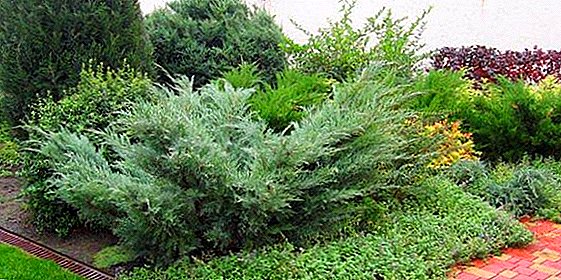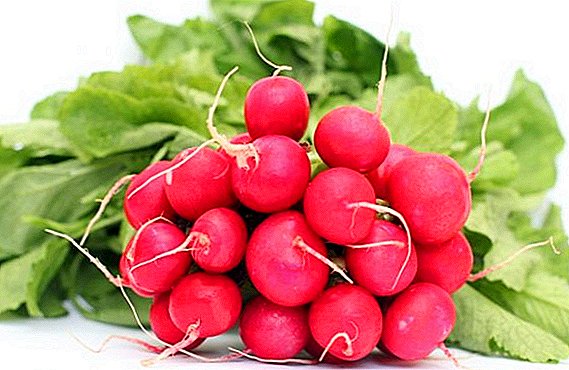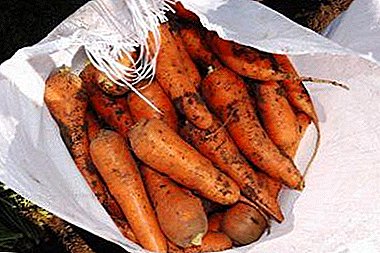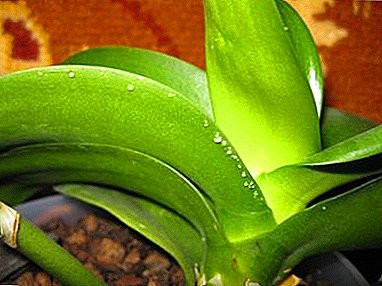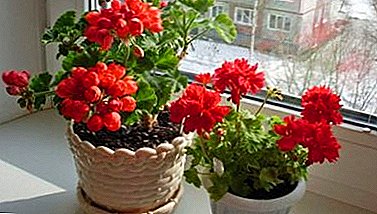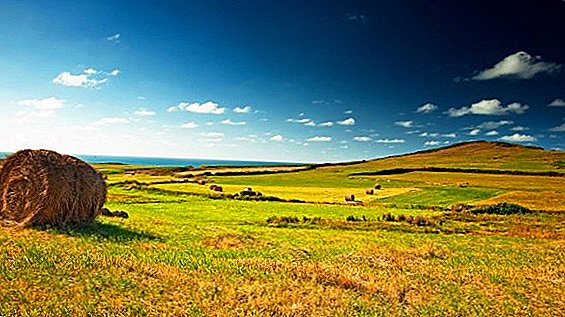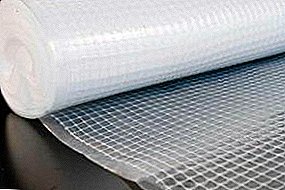
A variety of materials suitable for a greenhouse device raises the problem of choice.
In order not to be mistaken and not to pay extra money, it is necessary to understand the features of each of the proposed options.
Types of covering materials
The most common are the following types of covering materials for greenhouses and greenhouses: polyethylene and reinforced film, glass and nonwovens. In addition, on sale can be found covers industrial production.
Reinforced film
The main advantage of the reinforced film - high strength at an acceptable cost when closing the roof of the greenhouse. Structurally, the reinforced film consists of three layers: two outer layers of polyethylene or polypropylene, and also one reinforcing layer in the middle.

For the reinforcement of the film is used fiberglass. With a thickness of about 0.2-0.3 mm, fiberglass mesh successfully withstands most of the loads characteristic of use in open terrain. So, the reinforced film can be operated in the temperature range from -50 to +60 degrees, withstanding wind speeds of up to 30 meters per second. Stepan light transmission while saved at 75%.
Choosing a reinforced film for a greenhouse, you should pay attention to the following points:
- Colour. Yellow or blue film is better not to use in gardening. Such samples can be either not very high quality, or intended solely for construction purposes. The optimal color is white or blue;
- density. For gardening the best choice is from 120 to 200 g / m2.
The reinforced film is on sale rolls on 15-20 m. Width - about 2 to 6 m.
Polyethylene
Polyethylene film for a greenhouse or a greenhouse at the moment the cheapest covering material the market. This is achieved by ease of manufacture. Polyethylene has a high level light transmission (80-90%)However, it has little mechanical strength.
IMPORTANT! The greatest destruction of polyethylene occurs at the crease of the creases. The poet should avoid bending by 180 degrees.

In horticulture, usually used plastic film with a thickness of 0.08-0.1 mm, which, with careful use, successfully works out one or two seasons. There are denser options, but they are much more expensive.
Nonwovens
Nonwoven covering material for greenhouses - agrotextiles refer to the materials due to the peculiarities of manufacturing technology. Its essence comes down to melting polypropylene, blowing thin polypropylene filaments and bonding them together. Fastening methods for different manufacturers may differ, but at the output they all get about the same thing: a cloth made of tightly bonded synthetic fibers.

The main advantages nonwovens:
- the big mechanical strength and durability;
- ability to miss not only solar radiation, but also moisture;
- wide range of. Agrotextiles are available in densities of 17, 30, 40 and 60 g / m2.
In addition, nonwovens may vary in color:
- - white, having the lowest cost and density. They are used to protect against late frost, shading plants in the heat, as well as material for temporary greenhouses;
- - dark (dark green, brown or black). Most often have a density of 40-60 g / sq.m. Due to the ability of dark surfaces to heat up even under weak sunlight, greenhouses from this material are indispensable for growing early seedlings. In addition, dark agrofabric can close the beds and pristvolny circles of trees in order to protect against weeds.
Glass
The history of the use of glass for greenhouses dates back to the agrotechnical experiments of Peter I. Glass surfaces have the following advantages:
- - almost do not delay the ultraviolet required for plants;
- - have excellent resistance to abrasion;
- - do not change their physical qualities and geometric dimensions with temperature.
However, in the present greenhouse of glass in gardening is rarely used. This is due to the high cost of the material itself and the need to create strong frames under it. Limits the use and trauma of glass fragments.
Covers
The use of ready-made covers for greenhouses creates many amenities for the gardener:
- - firmly stitched cover for a greenhouse can last for several years;
- - the presence of multiple windows facilitates the care of plants and in some cases eliminates the need to remove the greenhouse during the day;
- - convenient fixture allows you to securely fix the material on the frame.
Main disadvantage industrial covers - their high price. In addition, such covers usually have certain sizes, making it difficult to use them on frames of non-standard configuration.
Alternative materials
As a covering material, any films and panels can be used that can transmit most of the solar radiation. Therefore, gardeners often have greenhouses with coatings such as:
- - polycarbonate (cellular and monolithic). It has a low mass, retains heat well, and is close to ordinary glass in terms of light transmission. However, such panels can change the geometry when heated. Therefore, they require a thoughtful approach during installation;
- - acrylic, better known as plexiglass or plexiglass. Convenient ability to bend after heating and then maintain a given shape, allowing you to create greenhouses of the original configurations. The disadvantage is that it is easily scratched, which impairs light transmission;
- - fiberglass. Consists of fiberglass base and synthetic resin. There is the possibility of self-manufacturing fiberglass panels. The material is very strong and durable, but quickly polluted.

You can watch the various types of covering materials and their proper use in this video:
How to cover?
In order to quickly and efficiently cover the greenhouse, you should carefully study the features of the selected covering material and take them into account during the work. This allows to fully reveal the agrotechnical potential of the coating and not to damage it during installation.
To speed up and simplify the process, you should pay attention to the following points:
- - before construction begins prepare a detailed plan;
- - you need to provide in advance material availability with some margin;
- - the frame of the greenhouse should with stock maintain weight covering material.
Since most greenhouse coverings do not differ in excess of strength, it is necessary to work with them very carefully.
Equipping a greenhouse on your own plot with your own hands is an event available to any gardener with minimal skills in construction. To succeed, it is worthwhile to study in advance a maximum of information on greenhouse farming.



